#womens hudson jeans
Explore tagged Tumblr posts
Text

Crop Cotton Bomber Jacket in Embroidered Camo from Hudson Jeans ($59.97 - on sale)
#bayley#bayley wwe#Pamela Martinez#Crop Cotton Bomber Jacket#bomber jacket#jacket#jackets#Embroidered Camo#Hudson Jeans#women of wrestling fashion#wwe#Smackdown
5 notes
·
View notes
Text
HUDSON Women's Barbara High Rise, Cropped, Bootcut Jean
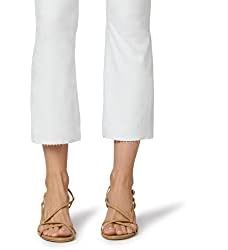
Price: (as of - Details) To calculate the overall star rating and percentage breakdown by star, we don’t use a simple average. Instead, our system considers things like how recent a review is and if the reviewer bought the item on Amazon. It also analyzed reviews to verify trustworthiness. Package Dimensions : 12.24 x 8.78 x 2.17 inches; 1.08 Pounds Item model number : WHC147TP7 Department : Womens Date First Available : January 7, 2021 Manufacturer : HUDSON https://www.cheapclothingcity.com/product/hudson-womens-barbara-high-rise-cropped-bootcut-jean/ Made in the USA or Imported Zipper closure Machine Wash High Rise Crop Bootcut elevated waistline Made from soft, stretch denim designed to hold its shape with extended wear https://www.cheapclothingcity.com/product/hudson-womens-barbara-high-rise-cropped-bootcut-jean/ Read the full article
0 notes
Text
okay yes i haven’t posted in months and i’ve been on other fandom shit but THE WAY ITS THIS MONTH. ITS TAKING OVER MY BRAIN AGAIN ITS HAPPENING AND WE DONT EVEN HAVE A TRAILER OH MY GOD
#bess marvin#bess turani#george fan#george fayne#nancy drew#ned nickerson#ace nancy drew#carson drew#ryan hudson#jean rosario#lucy sable#kate drew#temperance hudson#hannah gruen#historical society#women in white#cwnd#frozen heart killer#the fan fans#fan fans#fan fan#fanfan#fanfans
1 note
·
View note
Text
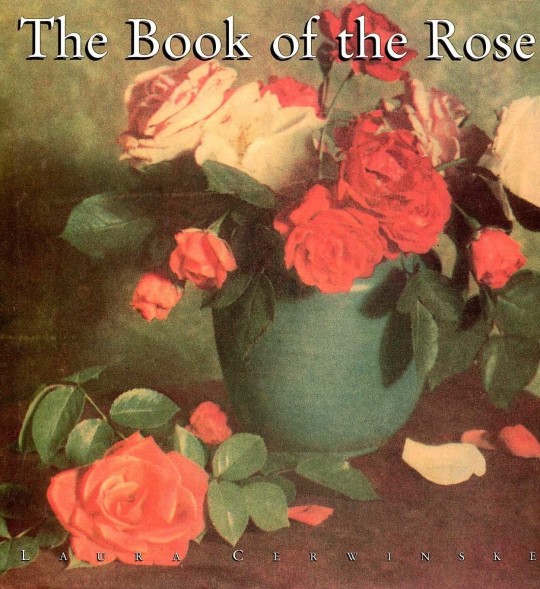


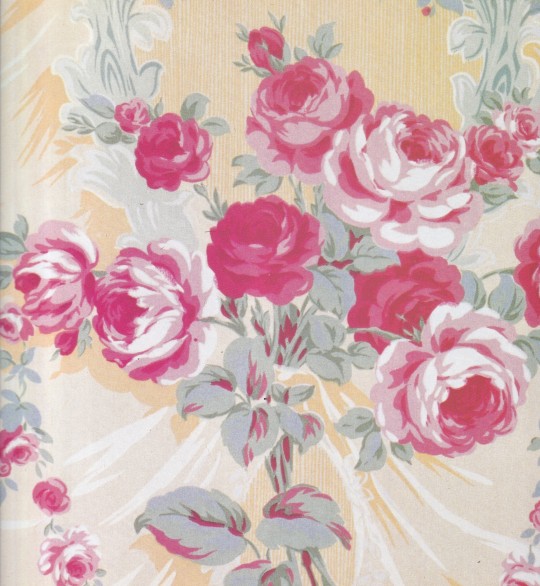


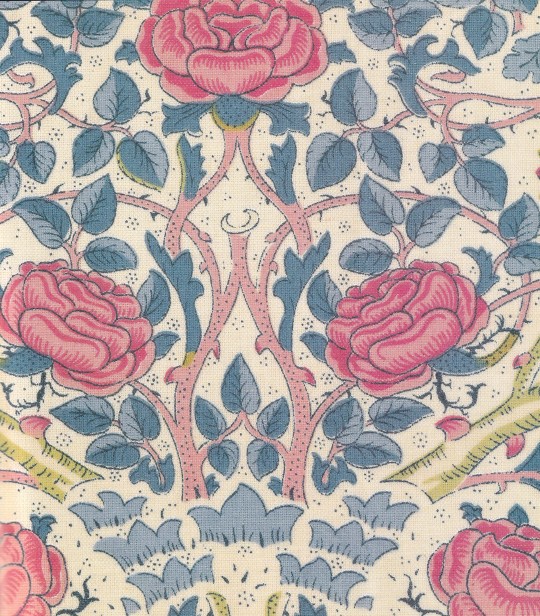



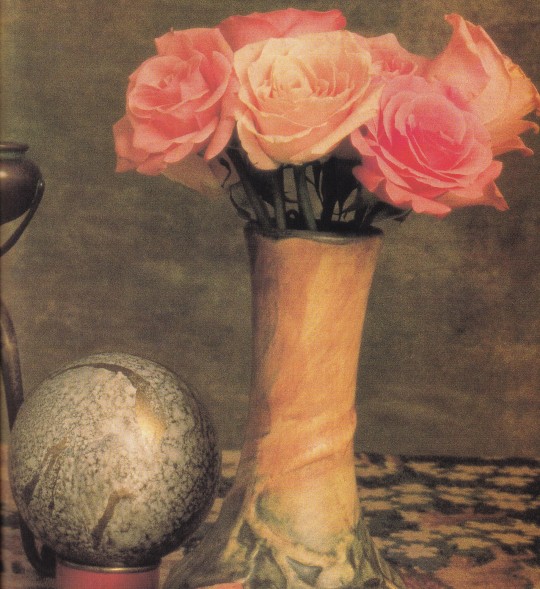

The Book of the Rose
Laura Cerwinske
Designed by Jean-Claude Suarès
Thames & Hudson, New York/London 1992, 160 pages, 24x24cm, ISBN 9780 500 015 353
euro 25,00
email if you want to buy [email protected]
No other flower has as legendary a history. The rose's dramatic combination of beauty and fragrance has made it a universal obsession, a symbol of spiritual love and physical passion praised in poetry, glorified in art, and venerated in every culture and religion. The Book of the Rose is an exquisite devotion to the flower's ravishing and sometimes audacious presence throughout the centuries. It follows the cultivation of the rose from Persian and Indian gardens to medieval cloisters; from the War of the Roses to the Russian Court of Catherine the Great and the breathtaking gardens of the Empress Josephine. The rich selection of illustrations includes delicate portraits of Indian men and women presenting roses to their lovers, illuminated manuscripts of medieval rose blooms, and paintings that celebrate the rose's beauty - and its erotic intimations - by artists such as Redouté, Fragonard, Renoir, van Gogh, Fantin-Latour, and Beardsley. The Book of the Rose also explores the rose motif in jewelry, porcelain and fabric, on furniture and in fashion, from the textiles of William Morris to the contemporary designs of Ungaro. In addition, a portfolio of glorious rooms illustrates the wide variety of rose themes in interior design. For anyone who has ever grown a rose, given or received a rose, worn a rose pattern or scent, here is a lavish tribute to the world's most celebrated flower.
16/03/24
#The book of the Rose#Laura Cerwinske#Jean-Claude Suarès#Redouté#Fragonard#Renoir#van Gogh#Beardsley#Fantin-Latour#William Morris#Ungaro#rose themes in interior design#flowers books#fashionbooksmilano
11 notes
·
View notes
Text
Additional Readings on it all, both popular and academic - An ‘Ism’ Overview - Perspectives Comparing And contrasting art movements
Prehistoric Art:
Palaeolithic Art (40,000 BCE - 10,000 BCE)
Clottes, Jean. Chauvet Cave: The Art of Earliest Times. University of Utah Press, 2003.
Guthrie, Dale. The Nature of Paleolithic Art. University of Chicago Press, 2005.
Vanhaeren, Marian, et al. "Middle Paleolithic shell beads in Israel and Algeria." Science, vol. 312, no. 5781, 2006, pp. 1785-1788.
Marshack, Alexander. "Upper Paleolithic notation and symbol: a provisional framework." Man, vol. 16, no. 1, 1981, pp. 95-122.
Neolithic Art (10,000 BCE - 2,000 BCE)
Renfrew, Colin, and Paul G. Bahn. Archaeology: Theories, Methods and Practice. 7th ed. London: Thames & Hudson, 2016.
Hodder, Ian. The Leopard's Tale: Revealing the Mysteries of Catalhoyuk. New York: Thames & Hudson, 2006.
Whittle, Alasdair, and Vicki Cummings. "Going over: People and things in the early Neolithic." Proceedings of the British Academy 144 (2007): 33-58.
Soffer, Olga. "The Upper Paleolithic and the Neolithic in the Russian Plain: Problems of Continuity and Discontinuity." Journal of World Prehistory 4, no. 4 (1990): 377-426.
Ancient Art:
Egyptian Art (3100 BCE - 30 BCE)
Wilkinson, Richard H. The Complete Gods and Goddesses of Ancient Egypt. Thames & Hudson, 2003.
Robins, Gay. The Art of Ancient Egypt. Harvard University Press, 2008.
Freed, Rita E. “The Representation of Women in Egyptian Art.” The Journal of Egyptian Archaeology, vol. 81, 1995, pp. 67-86.
Redford, Donald B. “The Heretic King and the Concept of the ‘Golden Age’ in Ancient Egypt.” Journal of Near Eastern Studies, vol. 33, no. 4, 1974, pp. 365-371.
Greek Art (800 BCE - 146 BCE)
Boardman, John. The Oxford History of Greek Art. Oxford University Press, 2001.
Pollitt, J. J. Art and Experience in Classical Greece. Cambridge University Press, 1972.
Neer, Richard T. "The Emergence of the Classical Style in Greek Sculpture." American Journal of Archaeology, vol. 105, no. 2, 2001, pp. 255-280.
Osborne, Robin. "Greek Art in the Archaic Period." The Journal of Hellenic Studies, vol. 115, 1995, pp. 118-131.
Roman Art (509 BCE - 476 CE)
Beard, Mary. SPQR: A History of Ancient Rome. New York: Liveright Publishing Corporation, 2015.
Brilliant, Richard. Roman Art. New York: Thames & Hudson, 2012.
Kleiner, Diana E. E. "Roman Sculpture." Oxford Art Journal 26, no. 1 (2003): 49-63.
Stewart, Peter. "The Social History of Roman Art." Cambridge Archaeological Journal 7, no. 1 (1997): 83-96.
Medieval Art:
Early Christian Art (200 CE - 500 CE)
Robin Margaret Jensen, Understanding Early Christian Art (New York: Routledge, 2000).
William Tronzo, The Oxford Handbook of Early Christian Art (New York: Oxford University Press, 2014)
Herbert Kessler, "The Spiritual Matrix of Early Christian Art," Representations, no. 11 (1985): 96-119, doi:10.2307/2928505.
Jas' Elsner, "What Do We Want Early Christian Art to Be?" Religion Compass 2, no. 6 (2008): 1118-1138, doi:10.1111/j.1749-8171.2008.00091.x.
Byzantine Art (330 CE - 1453 CE)
Cormack, Robin. Byzantine Art. Oxford: Oxford University Press, 2000.
Mango, Cyril. The Art of the Byzantine Empire, 312-1453: Sources and Documents. Englewood Cliffs, NJ: Prentice-Hall, 1972.
Mango, Cyril. "Byzantine Architecture." The Grove Dictionary of Art Online. Oxford Art Online. Oxford University Press, accessed March 19, 2023. https://www.oxfordartonline.com/groveart/view/10.1093/gao/9781884446054.001.0001/oao-9781884446054-e-7000002606.
Evans, Helen C. "Byzantium and the West: The Reception of Byzantine Artistic Culture in Medieval Europe." The Metropolitan Museum of Art Bulletin, vol. 58, no. 4 (Spring, 2001): 3-44. JSTOR, https://www.jstor.org/stable/3269056.
Islamic Art (7th century CE - present)
Grabar, Oleg. Islamic Art and Literature. Princeton, NJ: Princeton University Press, 1984.
Bloom, Jonathan M. and Sheila S. Blair. Islamic Arts. London: Phaidon Press, 1997.
Blair, Sheila S. "The Mosque and Its Early Development." Muqarnas 10 (1993): 1-19.
Carboni, Stefano. "The Arts of Islam." The Metropolitan Museum of Art Bulletin, vol. 58, no. 4, 2001, pp. 5-6, 17-65.
Romanesque Art (11th century - 12th century)
Conrad Rudolph, "Artistic Change at St-Denis: Abbot Suger's Program and the Early Twelfth-Century Controversy over Art," (Princeton, NJ: Princeton University Press, 1990).
George Henderson, "Early Medieval Art: Carolingian, Ottonian, Romanesque," (London: Thames & Hudson, 1972).
C. R. Dodwell, "The Dream of Charlemagne," The Burlington Magazine 118, no. 875 (1976): 330-341.
Gerardo Boto Varela, "The Iconography of the Lamb and the Role of the Temple in the Creation of the Romanesque Architectural Sculpture in the Kingdom of León," Gesta 43, no. 2 (2004): 171-186.
Gothic Art (12th century - 15th century)
Camille, Michael. Gothic Art: Glorious Visions. New York: Harry N. Abrams, 1996.
Conrad Rudolph. Artistic Change at St-Denis: Abbot Suger's Program and the Early Twelfth-Century Controversy over Art. Princeton, NJ: Princeton University Press, 1990.
Kemp, Simon. "The Uses of Antiquity in Gothic Revival Architecture." The Art Bulletin 73, no. 3 (1991): 405-421.
Snyder, James. "Gothic Sculpture in America: The Late 19th Century." The Journal of the Society of Architectural Historians 34, no. 4 (1975): 286-304.
Renaissance and Baroque Art:
Renaissance Art (14th century - 17th century)
Gardner, Helen, et al. Gardner's Art Through the Ages: A Global History. 16th ed., Cengage Learning, 2019.
Greenblatt, Stephen. Renaissance Self-Fashioning: From More to Shakespeare. University of Chicago Press, 1980.
Baxandall, Michael. "The Period Eye." Renaissance Studies, vol. 1, no. 1, 1987, pp. 3-20. JSTOR, www.jstor.org/stable/24409669.
Freedberg, David. "Painting and the Counter Reformation." Journal of the Warburg and Courtauld Institutes, vol. 32, 1969, pp. 244-262. JSTOR, www.jstor.org/stable/750844.
Mannerism (1520 - 1580)
Freedberg, S. J. (1993). Painting in Italy, 1500-1600. Yale University Press.
Shearman, J. (1967). Mannerism. Penguin Books.
Cole, B. (1990). Virtue and magnificence: Leonardo's portrait of Beatrice d'Este. Artibus et historiae, 11(21), 39-58.
Baxandall, M. (1965). "Il concetto del ritmo" in Michelangelo's Entombment. Journal of the Warburg and Courtauld Institutes, 28, 9-29.
Baroque Art (1600 - 1750)
Gombrich, E. H. The Story of Art. 16th ed. Phaidon Press, 1995.
Harris, Ann Sutherland. Seventeenth-Century Art and Architecture. 2nd ed. Laurence King Publishing, 2005.
Haskell, Francis. "The Judgment of Solomon: Poussin's 'The Sacrament of Ordination' and the Critics." The Burlington Magazine, vol. 124, no. 948, 1982, pp. 275-284.
Brown, Jonathan. "The Golden Age of Dutch Art: Painting, Sculpture, Decorative Art." The Metropolitan Museum of Art Bulletin, vol. 64, no. 4, 2007, pp. 36-44.
Rococo (1715 - 1774)
Gauvin Alexander Bailey, The Spiritual Rococo: Décor and Divinity from the Salons of Paris to the Missions of Patagonia, (New York: Cambridge University Press, 2014).
Alastair Laing, ed., Rococo: Art and Design in Hogarth's England, exh. cat. (London: Victoria and Albert Museum, 1984).
Alina Payne, "Fragile Alliances: Rococo and the Enlightenment," Art Bulletin 85, no. 3 (2003): 540-564.
Melissa Lee Hyde, "Fashioning the Bourgeoisie: A History of Clothing in the Nineteenth Century," Journal of Design History 21, no. 3 (2008): 219-23
19th Century Art:
Neoclassicism (1750 - 1850)
Wölfflin, Heinrich. Principles of Art History. Translated by M. D. Hottinger, Dover Publications, 1932.
Rosenblum, Robert. Transformations in Late Eighteenth Century Art. Princeton University Press, 1967.
Praz, Mario. "The Eighteenth-Century Elegiac Mood: Some Clarifications and Distinctions." Eighteenth-Century Studies, vol. 2, no. 3, 1969, pp. 295-318.
Honour, Hugh. "The Ideal of the Classic in the Visual Arts." Journal of the Warburg and Courtauld Institutes, vol. 22, no. 1/2, 1959, pp. 1-25.
Romanticism (1800 - 1850)
Abrams, M. H. The Mirror and the Lamp: Romantic Theory and the Critical Tradition. Oxford University Press, 1971.
Bloom, Harold. The Anxiety of Influence: A Theory of Poetry. Oxford University Press, 1973.
Frye, Northrop. "Towards Defining an Age of Sensibility." Studies in Romanticism, vol. 1, no. 1, 1962, pp. 1-14.
Mellor, Anne K. "Possessed by Love: The Female Gothic and the Romance Plot." PMLA, vol. 102, no. 2, 1987, pp. 134-150.
Realism (1830 - 1870)
Mearsheimer, John J. The Tragedy of Great Power Politics. New York: W.W. Norton, 2001.
Walt, Stephen M. The Origins of Alliances. Ithaca: Cornell University Press, 1987.
Waltz, Kenneth N. "The Theory of International Politics." International Security 15, no. 1 (Summer 1990): 5-17.
Morgenthau, Hans J. "Politics Among Nations: The Struggle for Power and Peace." Foreign Affairs 28, no. 4 (July 1950): 566-583.
Impressionism (1860 - 1900)
Herbert, Robert L. Impressionism: Art, Leisure, and Parisian Society. New Haven: Yale University Press, 1988.
Moffett, Charles S. Impressionist and Post-Impressionist Paintings in the Metropolitan Museum of Art. New York: Metropolitan Museum of Art, 1985.
Smith, Paul. "Monet's Impressionism: Aesthetic and Ideological Dilemmas." The Art Bulletin 68, no. 4 (1986): 595-615.
Dumas, Ann, and Anne Distel. "Monet at Vetheuil: The Turning Point." The Burlington Magazine 124, no. 953 (1982): 350-58.
Post-Impressionism (1886 - 1905)
Paul Smith, ed., "Post-Impressionism" (New York: Rizzoli International Publications, 1988).
Richard R. Brettell, "Post-Impressionists" (Chicago: University of Chicago Press, 1987).
John House, "Post-Impressionism: Origins and Practice" in "Oxford Art Journal" vol. 6, no. 2 (1983): 3-16.
Patricia Mainardi, "The End of Post-Impressionism" in "Art Journal" vol. 43, no. 4 (1983): 308-313.
20th Century Art:
Fauvism (1900 - 1910)
Elderfield, John. Fauvism. New York: Museum of Modern Art, 1976.
Shanes, Eric. The Fauves: The Reign of Color. New York: Harry N. Abrams, 1995.
Hargrove, June. "Matisse, Fauvism, and the Rediscovery of Pure Color." The Art Bulletin 63, no. 4 (1981): 689-704.
Rewald, John. "The Fauve Landscape." Gazette des Beaux-Arts 79, no. 6 (1972): 287-304.
Cubism (1907 - 1914)
Cooper, Douglas. The Cubist Epoch. Phaidon Press, 1970.
Green, Christopher. Cubism and its Enemies: Modern Movements and Reaction in French Art, 1916-1928. Yale University Press, 1987.
Shiff, Richard. "Cézanne and the End of Impressionism: A Study of the Theory, Technique, and Critical Evaluation of Modern Art." The Art Bulletin, vol. 58, no. 4, 1976, pp. 529-555.
Barr, Alfred H. "Cubism and Abstract Art." The Museum of Modern Art Bulletin, vol. 1, no. 3, 1934, pp. 6-7.
Futurism (1909 - 1916)
Marinetti, Filippo Tommaso. Futurist Manifestos. Edited by Umbro Apollonio, translated by Robert Brain and Others, Thames and Hudson, 1973.
Leighten, Patricia. Futurism: An Anthology. Yale University Press, 2019.
Perloff, Marjorie. "Futurism's 'Futuricity'." Modernism/modernity, vol. 19, no. 2, 2012, pp. 247-263.
Santoro, Marco. "The Politics of Speed: Futurism and Fascism." The Journal of Modern History, vol. 87, no. 4, 2015, pp. 821-856.
Dadaism (1916 - 1924)
Hulsenbeck, Richard. Dada Almanach. Berlin: Erich Reiss, 1920.
Gale, Matthew. Dada & Surrealism. London: Phaidon, 1997.
Naumann, Francis M. "Dada and the Concept of Art." The Art Bulletin 69, no. 4 (1987): 634-651. https://www.jstor.org/stable/3051041.
Dadoun, Roger. "The Dada Effect: An Anti-Aesthetic and its Influence." October 66 (1993): 3-16. https://www.jstor.org/stable/778760.
Surrealism (1920 - 1940)
Breton, André. Manifestoes of Surrealism. Translated by Richard Seaver and Helen R. Lane. Ann Arbor: University of Michigan Press, 1972.
Ades, Dawn. Dada and Surrealism Reviewed. London: Arts Council of Great Britain, 1978.
Martin, Alyce Mahon. "Surrealism and the Spanish Civil War." Oxford Art Journal 20, no. 2 (1997): 77-89.
Weisberg, Gabriel P. "Surrealism in America: The Beginning." Art Journal 28, no. 3 (1969): 222-29.
Abstract Expressionism (1940 - 1960)
Greenberg, Clement. Art and Culture: Critical Essays. Boston: Beacon Press, 1961.
Rosenberg, Harold. The Tradition of the New. New York: Horizon Press, 1959.
Alloway, Lawrence. "Networks, Names and Numbers." Artforum 1, no. 2 (1962): 29-33.
Hess, Thomas B. "Abstract Expressionism." Art News 51, no. 9 (1952): 22-23, 45-46, 48-49.
Pop Art (1950s - 1960s)
Foster, Hal. The First Pop Age: Painting and Subjectivity in the Art of Hamilton, Lichtenstein, Warhol, Richter, and Ruscha. Princeton University Press, 2012.
Livingstone, Marco, ed. Pop Art: A Continuing History. Thames & Hudson, 2013.
Alloway, Lawrence. “The Arts and the Mass Media.” Architectural Design and the Arts and Crafts Movement, vol. 31, no. 9, 1961, pp. 346–349. JSTOR, www.jstor.org/stable/4228719.
Lippard, Lucy R. “Pop Art.” Art International, vol. 12, no. 8, 1968, pp. 24–31. JSTOR, www.jstor.org/stable/24889088.
Minimalism (1960s - 1970s)
Judd, Donald. Complete Writings, 1959-1975. New York: The Press of the Nova Scotia College of Art and Design, 1975.
Fried, Michael. Art and Objecthood: Essays and Reviews. Chicago: University of Chicago Press, 1998.
Lippard, Lucy. "Eccentric Abstraction." Art International, vol. 12, no. 2, 1968, pp. 24-27.
Krauss, Rosalind. "Sculpture in the Expanded Field." October, vol. 8, 1979, pp. 30-44.
Conceptual Art (1960s - 1970s)
Kosuth, Joseph. Art after Philosophy and After: Collected Writings, 1966-1990. Cambridge, MA: MIT Press, 1991.
Lippard, Lucy R. Six Years: The Dematerialization of the Art Object from 1966 to 1972. Berkeley: University of California Press, 1997.
Buchloh, Benjamin H.D. “Conceptual Art 1962–1969: From the Aesthetic of Administration to the Critique of Institutions.” October 55 (Winter 1990): 105-143.
Graham, Dan. “The End of Liberalism.” In Dan Graham: Rock My Religion. Edited by Brian Wallis, 31-59. Cambridge, MA: MIT Press, 1993.
Performance Art (1970s - present)
Abramovic, Marina. The Artist Is Present: Essays. New York: Museum of Modern Art, 2010.
Phelan, Peggy. Unmarked: The Politics of Performance. New York: Routledge, 1993.
Goldberg, RoseLee. "Performance Art: From Futurism to the Present." October 56 (1991): 78-89.
Jones, Amelia. "Presence in Absentia: Experiencing Performance as Documentation." Art Journal 56, no. 4 (1997): 11-18.
Postmodernism (1970s - present)
Jameson, Fredric. Postmodernism, or, the Cultural Logic of Late Capitalism. Durham: Duke University Press, 1991.
Lyotard, Jean-Francois. The Postmodern Condition: A Report on Knowledge. Minneapolis: University of Minnesota Press, 1984.
Butler, Judith. "Contingent Foundations: Feminism and the Question of ‘Postmodernism’." The Journal of Philosophy, vol. 86, no. 10, 1989, pp. 571- 577.
Harvey, David. "The Condition of Postmodernity: An Enquiry into the Origins of Cultural Change." Blackwell Publishers Ltd, 1990.
Digital Art (1980s - present)
Lev Manovich, The Language of New Media, (Cambridge, MA: MIT Press, 2001).
Christiane Paul, Digital Art, (New York: Thames & Hudson, 2008).
Sarah Cook and Beryl Graham, "From Periphery to Centre: Locating the Technological in Art History," Art History 28, no. 4 (September 2005): 514-536, https://doi.org/10.1111/j.1467-8365.2005.00442.x.
Oliver Grau, "The Complexities of Digital Art," in MediaArtHistories, ed. Oliver Grau (Cambridge, MA: MIT Press, 2007), 45-67.
Street Art (1980s - present)
Chaffee, Lyman, and Chris Stain. Walls of Heritage, Walls of Pride: African American Murals. Jackson: University Press of Mississippi, 2011.
Harrington, Steven. Street Art San Francisco: Mission Muralismo. San Francisco: Chronicle Books, 2009.
Schacter, Rafael. "The World Atlas of Street Art and Graffiti." The Journal of Aesthetics and Art Criticism 73, no. 4 (2015): 385-387.
Riccini, Raffaele. "Street Art as a New Form of Urban Governance: A Comparative Perspective." Urban Affairs Review 52, no. 5 (2016): 723-746.
Contemporary Art:
Neo-Expressionism (1980s - 1990s)
Storr, Robert. 1986. "Dislocations: Themes and Meanings in Post-World War II Art." New York: Museum of Modern Art.
Harrison, Charles, and Paul Wood. 1991. "Art in Theory 1900-1990: An Anthology of Changing Ideas." Oxford: Blackwell Publishers.
Bois, Yve-Alain. 1986. "Painting: The Task of Mourning." October 37 (Summer): 15-63.
Krauss, Rosalind E. 1985. "The Originality of the Avant-Garde and Other Modernist Myths." Cambridge, Mass: MIT Press.
Installation Art (1990s - present)
Bishop, Claire. Installation Art: A Critical History. New York: Routledge, 2005.
O'Doherty, Brian. Inside the White Cube: The Ideology of the Gallery Space. 2nd ed. Chicago: University of Chicago Press, 1999.
Schneider, Rebecca. "The Explicit Body in Performance." TDR: The Drama Review 46, no. 2 (2002): 74-91. doi:10.1162/105420402320980586.
Bishop, Claire. "Antagonism and Relational Aesthetics." October 110 (2004): 51-79. doi:10.1162/0162287042379787.
Relational Aesthetics (1990s - present)
Bourriaud, Nicolas. Relational Aesthetics. Dijon: Les presses du réel, 1998.
Bishop, Claire. Artificial Hells: Participatory Art and the Politics of Spectatorship. London: Verso, 2012.
O'Doherty, Brian. "Inside the White Cube." Artforum 5, no. 1 (1967): 12-16.
Bishop, Claire. "Antagonism and Relational Aesthetics." October 110 (2004): 51-79.
New Media Art (1990s - present)
Manovich, Lev. The Language of New Media. Cambridge, MA: MIT Press, 2001.
Paul, Christiane. Digital Art. London: Thames & Hudson, 2003.
Gere, Charlie. "Digital Culture." In The Oxford Handbook of New Audiovisual Aesthetics, edited by John Richardson, Claudia Gorbman, and Carol Vernallis, 491-506. New York: Oxford University Press, 2013.
Drucker, Johanna. "The Century of Artists' Books." Art Journal 56, no. 3 (1997): 20-34.
Superflat (1990s - present)
Murakami, Takashi. Superflat. New York: MADRA Publishing, 2000.
Schimmel, Paul. Color and Form: The Geometric Sculptures of Donald Judd. Los Angeles: Museum of Contemporary Art, 1991.
Krajewski, Sara. "Superflat and the Politics of Postmodernism." Postmodern Culture 14, no. 3 (2004): 1-18. doi:10.1353/pmc.2004.0046.
Nakamura, Lisa. "Cuteness as Japan's Millennial Aesthetic." Journal of Aesthetics and Art Criticism 65, no. 2 (2007): 137-147. doi:10.1111/j.1540-6245.2007.00207.x.
Post-Internet Art (2000s - present)
Hito Steyerl, The Wretched of the Screen (Berlin: Sternberg Press, 2012).
Karen Archey and Robin Peckham (eds.), Art Post-Internet: INFORMATION/DATA (Berlin: Sternberg Press, 2014).
Gene McHugh, "Post-Internet: Art After the Internet," Artforum International 52, no. 1 (2013): 366-71.
Nora N. Khan and Steven Warwick, "Fear Indexing the X-Files," e-flux Journal 56 (2014): 1-9.
Afrofuturism (2000s - present)
Sheree R. Thomas, ed., "Dark Matter: A Century of Speculative Fiction from the African Diaspora" (New York: Aspect/Warner Books, 2000).
Ytasha L. Womack, "Afrofuturism: The World of Black Sci-Fi and Fantasy Culture" (Chicago: Lawrence Hill Books, 2013).
Nettrice R. Gaskins, "Afrofuturism and Post-Soul Possibility in Black Aesthetics," "Journal of Black Studies" 40, no. 4 (2010): 699-710.
Reynaldo Anderson and Charles E. Jones, "Introduction: The Rise of the Afrofuturist," "Black Magnolias Journal" 5, no. 2 (2018): 1-11.
Socially Engaged Art (2000s - present)
Bishop, Claire. Artificial Hells: Participatory Art and the Politics of Spectatorship. London: Verso, 2012.
Kester, Grant. Conversation Pieces: Community and Communication in Modern Art. Berkeley: University of California Press, 2004.
Kester, Grant. "Dialogical Aesthetics: A Critical Framework for Littoral Art." in Theory in Contemporary Art since 1985. Ed. by Simon Leung. Oxford: Blackwell, 2005.
Thompson, Nato. "Living as Form: Socially Engaged Art from 1991-2011." Art Journal, Vol. 71, No. 1, 2012, pp. 101-102.
Environmental Art (2000s - present)
Schama, Simon. Landscape and Memory. New York: Alfred A. Knopf, 1995.
Kastner, Jeffrey, and Brian Wallis, eds. Land and Environmental Art. London: Phaidon, 1998.
Kagan, Sacha. "The Nature of Environmental Art." The Journal of Aesthetics and Art Criticism 51, no. 3 (1993): 455-67.
White, Edward. "Earthworks and Beyond." Art Journal 39, no. 4 (1980): 326-32.
NFT Art (2010s - present)
Belamy, Christies. (2018). Portrait of Edmond de Belamy. Paris: Obvious Art.
Harrison, P., & Weng, S. (2021). The NFT Bible: Everything you need to know about non-fungible tokens. United States: Independently published.
Liu, Z., Wang, J., & Lin, L. (2021). From NFT to NFA: The Implications of Blockchain for Contemporary Art. Journal of Cultural Economics, 45(2), 245-264. doi: 10.1007/s10824-021-09421-6
Schellekens, M., & Zuidervaart, H. (2022). On the Importance of Being Unique: An Analysis of Non-Fungible Tokens as a Medium for Digital Art. Leonardo, 55(1), 56-63. doi: 10.1162/leon_a_02179
3 notes
·
View notes
Text
"Little Women" Posthumous Reunion: Final Resting Places of the People Behind the Novel and Its Adaptations
As a fan of the YouTube channel Hollywood Graveyard and the "Posthumous Reunion" pages on FindAGrave.com, I thought I would make a similar tribute to the people behind Little Women and its best-known screen adaptations. This is a guide to the burial sites (if they exist) of all the adaptations' leading actors and creative team members who have died, as well as those of the Alcott family and their friends, for anyone who hopes to visit them someday.
@littlewomenpodcast, @joandfriedrich, @thatscarletflycatcher
Arlington National Cemetery – Arlington, Virginia, USA
John Davis Lodge (John Brooke, 1933 film)
Cementerio de Benalmádena – Benalmádena, Spain
Paul Lukas (Friedrich Bhaer, 1933 film)
Ceder Hill Cemetery – Hartford, Connecticut, USA
Katharine Hepburn (Jo, 1933 film)
Cimitero Flaminio – Rome, Italy
Rossano Brazzi (Friedrich Bhaer, 1949 film)
Cimitiére Communal de Montrouge – Montrouge, France
May Alcott Nieriker (real-life Amy) (site unknown)
Forest Lawn Memorial Park, Glendale – Glendale, California, USA
Edna May Oliver (Aunt March, 1933 film)
June Allyson (Jo, 1949 film)
Elizabeth Taylor (Amy, 1949 film)
Robert Young (Mr. Laurence, 1978 miniseries)
George Cukor (director, 1933 film)
Mervyn LeRoy (director/producer, 1949 film)
Max Steiner (music, 1933 and 1949 films)
Adolph Deutsch (music, 1949 film)
Forest Lawn Memorial Park, Hollywood Hills – Los Angeles, California, USA
Jean Parker (Beth, 1933 film)
Leon Ames (Mr. March, 1949 film)
Holy Cross Cemetery – Culver City, California, USA
Mary Astor (Marmee, 1949 film)
Inglewood Park Cemetery – Inglewood, California, USA
Samuel S. Hinds (Mr. March, 1933 film)
Kensico Cemetery – Valhalla, New York, USA
Henry Stephenson (Mr. Laurence, 1933 film)
Mortlake Crematorium – Richmond, Greater London, England
Pat Nye (Hannah, 1970 miniseries)
Mount Hope Cemetery – Hastings-on-Hudson, New York, USA
Lucile Watson (Aunt March, 1949 film)
Oak Hill Cemetery – Lawrence, Kansas, USA
Alf Whitman (real-life Laurie)
Pleasant View Cemetery – Lyme, Connecticut, USA
Joan Bennett (Amy, 1933 film)
Savannah Cemetery – Savannah, Tennessee, USA
Elizabeth Patterson (Hannah, 1949 film)
Shiloh Cemetery – Shiloh, Illinois, USA
Mary Wickes (Aunt March, 1994 film)
Sleepy Hollow Cemetery – Concord, Massachusetts, USA
Louisa May Alcott (author and real-life Jo)
Abigail May Alcott (real-life Marmee)
Amos Bronson Alcott (real-life Mr. March)
Anna Alcott Pratt (real-life Meg)
John Bridge Pratt (real-life John Brooke)
Elizabeth Sewall Alcott (real-life Beth)
Henry David Thoreau (possible real-life Friedrich Bhaer)
Sparkman Hillcrest Memorial Park – Dallas, Texas, USA
Greer Garson (Aunt March, 1978 miniseries)
St. Leonard’s Churchyard – Hove, East Sussex, England
C. Aubrey Smith (Mr. Laurence, 1949 film)
Valhalla Memorial Park – North Hollywood, California, USA
Mabel Colcord (Hannah, 1933 film)
Westwood Village Memorial Park – Los Angeles, California, USA
Janet Leigh (Meg, 1949 film)
Cremated, Ashes Held Privately or Scattered
Frances Dee (Meg, 1933 film)
Douglass Montgomery (Laurie, 1933 film)
Peter Lawford (Laurie, 1949 film)
Patrick Troughton (Mr. March, 1970 miniseries)
Jean Anderson (Aunt March, 1970 miniseries)
Dorothy McGuire (Marmee, 1978 miniseries)
Richard Gilliland (Laurie, 1978 miniseries)
William Schallert (Mr. March, 1978 miniseries)
Virginia Gregg (Hannah, 1978 miniseries)
Angela Lansbury (Aunt March, 2017 miniseries)
Michael Gambon (Mr. Laurence, 2017 miniseries)
Sarah Y. Mason (screenwriter, 1933 and 1949 films)
Victor Heerman (screenwriter, 1933 and 1949 films)
Merian C. Cooper (producer, 1933 film)
Donated to Medical Science
Spring Byington (Marmee, 1933 film)
Unknown (Not Made Public or No Information Online)
Ladislas Wisniewski (real-life Laurie)
Richard Stapley (John Brooke, 1949 film)
Stephanie Bidmead (Marmee, 1970 miniseries)
Frederick Jaeger (Friedrich Bhaer, 1970 miniseries)
John Welsh (Mr. Laurence, 1970 miniseries)
John Neville (Mr. Laurence, 1994 film)
David Hempstead (screenwriter, 1933 film)
Elmer Bernstein (music, 1978 miniseries)
#little women#find a grave#actors#actresses#creative team#louisa may alcott#alcott family#graves#burial#cremation#tw: death
6 notes
·
View notes
Text

*John Audubon (April 26, 1785 - January 27, 1751). He was a French American ornithologist, naturalist, painter, and slave owner. He painted, cataloged, and described the birds of North America.
He was born in Saint Domingue, the son of Jean Audubon, a French sea captain and slave master, and Jeanne Rabin. She was a Black Creole enslaved woman from the Congo and Jean Audobon’s chambermaid and mistress.
He was raised in Nantes, France, by his stepmother. He traveled to the US to avoid the Napoleonic Wars. He caught yellow fever, and the sea captain placed him in a boarding house run by Quaker women who nursed him to recovery and taught him the Quaker form of English. He married Lucy Bakewell (1808).
He managed a family farm near Philadelphia and began the study of natural history by conducting the first bird banding on the continent. He began drawing and painting birds.
They lived in Henderson, Kentucky, they had nine enslaved people working for them in their household. They acquired several more enslaved people during the 1820s but sold them in 1830; He pursued his nature study and painting more.
He moved to New Orleans in the spring of 1821. He followed his Birds of America up with a companion work, Ornithological Biographies, and life histories of each species written with Scottish ornithologist William MacGillivray. Both the books of paintings and the biographies were published between 1827 and 1839. He continued making expeditions in North America and bought an estate on the Hudson River. In 1842 he published a popular edition of Birds of America in the US. His final work was on mammals, the Viviparous Quadrupeds of North America, which was written in collaboration with his good friend Rev. John Bachman (of Charleston, South Carolina), who supplied much of the scientific text. It was completed by his sons and son-in-law and published posthumously. #africanhistory365 #africanexcellence
2 notes
·
View notes
Note
😎 I woke up this morning and finished Darkest Knight part two and it was Amazing as always Vulture, really knocked it out of the park! I am a early 2000s kid ( I was born in 2000) so I know and LOVE the X- man movies( even if the timelines of those things are a massive mess) so it was fantastic reading out some of the classic scenes play out ( and Hugh Jackman - don’t know if I spelled his name right - was BORN to play that role ) . I am also not joking when I say that I thought and saw the whole thing playing out in the X - mansion in the lens of that movie in my head but didn’t say anything because I didn’t know if that was what you were going for.
I loved all the cute little interactions between R and Nat. It also seems to me that Nat might be catching some feelings for our dear Wolvie . And that little scene where R and Jean see each other again for the first time in a while, do I detect a hit of jealousy from one Miss Natalia Alinanovna Romanova ? Scott is still a dick as always, but I wonder how did he ( or anyone else in the manor for that matter know about the RR , I would think anyone there would think that Nat is a Mutant in trouble) ? Also R scolding themselves for scaring Nat 🥺🥺🥺. Nat picking out the flannel shirt that matches R eyes and the little blush afterwards ( quick question, is R actually Color Blind? Because that statistically happens in men more then Women. Not finding fault , just wanting some clarification. ) is so stinking cute!!!!!
The RR was presented as the basically the worlds worst boarding school in the Age of Ultron flashbacks, in the Peggy Carter series ( I don’t know about the comics because I don’t read them , I just have access to google and wiki) before they launched the RR into the sky in BW. At least that is how the “ class” stage is presented and we have no idea what the RR looks like for the “ graduated” widows. So I wonder how Nat is reacting to leaving one “ boarding school” and walking into another one , especially when she sees the “ other half” of the school, where students are taught and trained to control their abilities.
I loved seeing some of my ideas and contributions making it’s way into the story even if it wasn’t in a way that I expected . And all of my head canons about the truck is shot down now because I didn’t know that they were going to leave it behind. 😭😭😭 ( in all seriousness it’s cool , I am just joking) . But since they are in the school Nat can stumble upon the “ questionable” YouTube channel from one of the kids on their phone. Nat can stumble upon the Hudson’s wartime nurses, R’s time in the wars and all the documentaries and  specials from history class ( I have more thoughts on this but will put it in a separate post so this one isn’t too long).
This is the last bit of this post. Speaking of classes and the school I can’t wait to see R and Rouge reunite ( because you can’t convince me otherwise that Rouge wasn’t Wolverines adopted kid . In the movies and the early 2000s cartoon was that way . I don’t know about the comics and original cartoon, but I do know that in those things Rogue was in her 20s. The girl was a grown ass woman and she had a on again off again type thing with Gambit.) . R having the same reaction as Movie Wolverine to ice man ( a dad who has a teenage daughter and someone is sniffing around his daughter) and refusing to call him anything but junior. Rogue has the reaction of a kid who’s single parent who brings a potential partner home will looking at Nat . So while R has her “ dad” stand off with Ice man sizing him up , Rogue is having her “kid” stand off with Nat sizing Nat up. Both just kinda stares daggers at their respective opponents and both Ice man and Nat are just like 😨😓👀 “ Hahahaha ! I am in danger!”
All the kids at the school  absolutely love R and she is one of the favorite teachers/ staff at the school . No one likes Scott because he is a dick ( like seriously man you didn’t have to disrespect Nat like that, I get that you might have some  security concerns but do that in private and not RIGHT IN FRONT of the poor girl) .
Also please tell me that Nat picked the pocket knife back up and didn’t just leave it in the unconscious widow ( side note I wonder who that widow was) ? OH SHIT !!!!!! I just realized that Nat probably has a tracker in her ( like as seen in BW) and that is why the widow was able to find them in the mall . NOW Nat is at the school!!!!
:D I'm so glad you liked Part 2!
Hugh Jackman is ❤️ and Wolverine has always been my favorite superhero, so it was only a matter of time before I wrote a Wolverine-inspired!R for this fandom. :) And yep! I pictured the OG X-Mansion from the first X-Men trilogy as well, but of course you are welcome to use your own imagination.
Glad you caught on to that. :) Nat is definitely starting to pick up on affection for her friend. And yes you did! No spoilers now, but Jean and R definitely have some history, which of course Scott is very familiar with and unhappy about lol.
It wasn't stated in the fic, but R basically told the X-Men in an unseen text/call that Nat escaped the Red Room and that's why she needs their help. So that's how Scott knows where Nat is from, but he could've been more subtle about it. Also, this R is not colorblind! (How else would she pick out the redheads? 😂) But the flannel shirt thing was just supposed to be a cute moment, and more implies that R is very bad at choosing her own clothing, so she looks better when someone helps her. :)
That's a good point about the Red Room! I know R is excited to show Nat what the school really has to offer, but she might have to be careful so she doesn't trigger anything.
I know, I'm so sorry about your brilliant truck headcanon. 😭 I had already written the part where they ditched it when we were discussing it on here, and it was too late to go back and make the switch lol.
You are in luck, @mostlymarvelsstuff has already talked me into including a scene with Rogue and R in Part 3. :) But I definitely want to base their relationship more off what we had in the movies, like a parent-daughter relationship. And Nat just seeing R interact with the younger kids in general will be a very heart-warming experience for her. :)
Hmm...Perhaps Nat would have picked it back up, the pocket knife is very sentimental to her now. And I based the Widow off the same one who hunts Nat and Yelena in Budapest (and dies when she falls off that pillar)...Not sure if she had a name though.
The tracker thing 👀 I won't lie, that wasn't exactly what I had in mind but it's a good guess.
6 notes
·
View notes
Photo
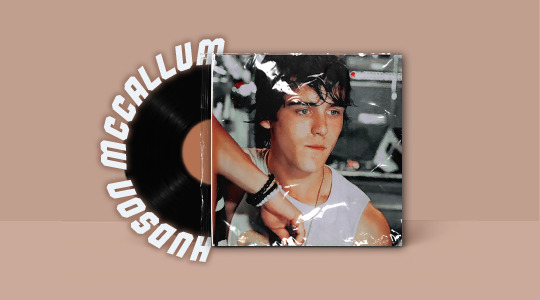
( charlie gillespie, cis man, he/him, muse a ) i just saw hudson “mackey” mccallum rocking out in their hotel room , blasting modern love by david bowie out loud. aren’t they supposed to be at the studios since they’re the vocalist ? the tabloids have been saying that the twenty-five year old is + ingenious, but can also be - egotistical — overall they’re the conspiracist. but their fans say they remind them of untamed bed head, government conspiracy theories, the crackling sound of playing a dirty record, light washed levis jeans, poorly written poetry.
○ ○ ○ playlist ○ ○ ○ pinterest ○ ○ ○
THE BASICS
𝒏𝒂𝒎𝒆 hudson king mccallum 𝒏𝒊𝒄𝒌𝒏𝒂𝒎𝒆𝒔 mackey 𝒂𝒈𝒆 twenty-five 𝒈𝒆𝒏𝒅𝒆𝒓 & 𝒑𝒓𝒐𝒏𝒐𝒖𝒏𝒔 cis man, he/him 𝒔𝒆𝒙𝒖𝒂𝒍 𝒐𝒓𝒊𝒆𝒏𝒕𝒂𝒕𝒊𝒐𝒏 pansexual 𝒐𝒄𝒄𝒖𝒑𝒂𝒕𝒊𝒐𝒏 musician, lead singer of afternoon daydream 𝒉𝒐𝒃𝒃𝒊𝒆𝒔 reading marxist theory (poser...), knitting (this one is a secret), drinking ungodly amounts of sparkling water 𝒂𝒔𝒕𝒓𝒐𝒍𝒐𝒈𝒚 𝒔𝒊𝒈𝒏(𝒔) aquarius sun, aries moon, scorpio rising
BACKGROUND
𝒓𝒆𝒔𝒊𝒅𝒆𝒏𝒄𝒆 ? 𝒏𝒂𝒕𝒊𝒐𝒏𝒂𝒍𝒊𝒕𝒚 american 𝒑𝒍𝒂𝒄𝒆 𝒐𝒇 𝒃𝒊𝒓𝒕𝒉 loveland, ohio 𝒅𝒂𝒕𝒆 𝒐𝒇 𝒃𝒊𝒓𝒕𝒉 february 1, 1998 𝒆𝒅𝒖𝒄𝒂𝒕𝒊𝒐𝒏 𝒉𝒊𝒔𝒕𝒐𝒓𝒚 high school degree 𝒓𝒆𝒍𝒂𝒕𝒊𝒗𝒆𝒔 grant mccallum (father, age 49) , flora mccallum (mother, age 48), & luke elvis mccallum (brother, age 29)
FAVORITES
𝒇𝒐𝒐𝒅 classic, greasy double cheeseburger (like in the menu tbh) 𝒅𝒓𝒊𝒏𝒌 natty lite... (barf) 𝒄𝒐𝒍𝒐𝒓 green 𝒃𝒂𝒏𝒅/𝒂𝒓𝒕𝒊𝒔𝒕 nat king cole, b/c namesake 𝒔𝒐𝒏𝒈 i’d rather go blind - etta james 𝒎𝒐𝒗𝒊𝒆 stand by me 𝒃𝒐𝒐𝒌 ...........communist manifesto ugh he’s sooooo annoying i’m sorry 𝒔𝒆𝒂𝒔𝒐𝒏 fall 𝒊𝒕𝒆𝒎 𝒐𝒇 𝒄𝒍𝒐𝒕𝒉𝒊𝒏𝒈 a worn in brown ac/dc sweatshirt with cigarette burn holes in the sleeves
MISERABLE AMERICA, ASSASSINATE MY CHARACTER
trigger warnings: alcoholism, general parental neglect
THIS specific gif is his vibe it is the reason i chose his fc in the first place
set the scene : braille by regina spektor plays softly in the background. she was lying on the floor and counting stretch marks / she hadn't been a virgin and he hadn't been a god / so she named the baby elvis / to make up for the royalty he lacked flora & grant mccallum might have had something resembling love at some point in their life, but the two of them were never meant to last. only, at twenty years old, they brought their first child into the world (on accident). flora named him luke elvis mccallum, thinking that maybe, if she tossed in one of the greats to his name, he’d be great too. four years later, and whatever semblance of a marriage they had was falling apart. enter hudson king mccallum, the boy who was supposed to save their marriage. again, flora had bestowed him with the honor of carrying the middle name king, after the great nat king cole. ( spoiler alert: hudson did NOT save their marriage )
growing up in a small town just outside of cincinnati, mackey had a somewhat normal, if not mundane childhood. sure, his family was a little quirky. his father was a drunk who never really wanted kids in the first place, and his mother was a hippie/dead head/stuck on some 80′s acid trip lady who didn’t really believe in parenting, and saw her kids as her friends. his older brother, luke, was a real jock kind of guy — played on the baseball team, disrespected women, a general bummer to be around. he had a god given talent of getting under mackey’s skin, and he was far stronger than him which meant fights never really resulted in mackey’s favor. so it was safe to say he avoided being home as often as possible, instead taking to the boring, suburban streets of loveland ohio in search of something to do.
he’s been quoted before saying “the only thing my mother ever gave me was music.” very true! flora did not much else, but she did have an extensive record collection and taught him everything he knows — from nat king cole to smashing pumpkins, flora not only had the record but knew the history. and the only time mackey could stand to be around her for long periods of time was when she was telling him about music, teaching him about the greats ( of course, even those moments weren’t the best — he can still recall a time when he was nine and she was going on and on about led zeppelin, and passed him a joint as she explained the beauty of whole lotta love. again...he was nine )
in high school, mackey and his best friend decided to start a band. this was mostly due to suburban boredom. they were called believer (as in believer of aliens), and they made (pretty admittedly) shitty rock music. but it was throughout that time that mackey fell in love with making music, however poor their band sounded (it was literally just the two of them, a guitar and drums, so it was never really going to sound good). though mackey discovered that he actually had a way with words, and getting them down on paper. first time he ever actually realized this was when his english teacher pulled him aside after class. he was never really a good student — other than history and english, he was failing most his classes — so he was expecting a lecture. instead, she told him he was incredibly gifted. for someone whose father constantly reminded them what a piece of shit they were, it meant more to him than she’d ever know. ultimately, it ended up changing his life.
fast forward : GRADUATION DAY ! hoorah ! mackey had no plan in sight. no college acceptance letter or trade school opportunities. instead, he bought a one way greyhound bus ticket to new york city. so long, ohio! and go fuck yaself! he’d picked NYC because his cousin, blue, lived there and, not knowing anyone in los angeles, that sounded like a better option. save for the fact that blue spent most his nights crashing on random couches and basements, which meant mackey would spent the next few months doing the same. that’s okay, he could handle it. in fact, he kind of liked it. anything beat loveland, ohio.
FAME LET’S HIM LOOSE, HARD TO SWALLOW
trigger warnings: drug and alcohol use
as much as mackey loves making music, he’d never actually expected it to make him money. he never actually expected to get a record deal, to become famous, to sell out shows and be on tv. it was a pretty tough pill to swallow, when he began to realize that his life may not be his own life anymore.
he has never claimed to be dealing with the fame well, but he does it in the best way he knows how — turning to drugs & alcohol. hey! like father like son! he’s an absolute mess and the press picks up on it, and their pr team would step in but people seem to rave about him online. “he’s so real!!” “mackey having a mental break down on stage last night was so me” “manifesting becoming a mackey tour groupie.” All common threads you’ll find below tikok videos of him! he’s an absolute mess, a pretentious, self obsessed, unapologetic mess, but at least for right now, the internet is eating it up. until he gets cancelled, at least (he also has made a lot of commentary on stage about cancel culture. he’s like go ahead and cancel me!!!!! ok mackey...calm down)
he is probably the reason the band keeps having to go through media training. he just! cannot! be good! it’s hard for him to care too much about anything other than music because his entire life, he didn’t really care about anything other than music. this poses a problem when it comes to relationships and friendships as well, he can often times come off as apathetic even when he doesn’t mean to.
i like to think of him as a combination of matty healy & dominic fike. says really outlandish things, drinks on stage every night, maybe has cried on stage before, kisses his fans because why not, talks about being dumped while on stage, super relatable tingz
I THOUGHT THAT YOU WERE STRAIGHT, NOW I’M WONDERIN?
a believer in all sorts of conspiracy theories. big foot, loch ness monster, jim moorison is alive and well and living in cuba, you name it. he doesn’t trust the government, didn’t have a bank account until VERY recently and his credit score was like 300 (in his defense, his mom took out a credit card in his name as a kid and now his credit is shot, but it’s slowly climbing back up), and he refuses to be a “cog in the corporate america machine.” as a teenager, he was a self declared communist — so this newfound fame of afternoon daydream has been something he has been struggling to grapple with. was he just becoming another cog in the machine? another money bag for a huge record label like columbia?
he loves wearing thrifted clothes that have weird sayings. some of his personal favs: a baseball cap that says “bigfoot is real and he tried to eat my ass”, a t shirt that says “women want me fish fear me”, and a hoodie that says in red gems: “i wanna talk about me.”
he’s a self professed music snob. but that doesn’t mean he’s above listening to pop music — some pop music meets his standards (little mix yes, fifth harmony no). he has perfect pitch, meaning he can hear pretty much any sound and tell you what note it’s in (okay charlie puth. he’s slightly less annoying about it) but he DOES act like this fact makes him a better musician than most.
14 notes
·
View notes
Link
Check out this listing I just added to my Poshmark closet: Hudson Tilda Mid Rise Cigarette Jean Womens 30 Dark Wash Straight Stretch Denim.
0 notes
Text
list of the worst movies Ive seen in the 20th century
14 Hours (Fourteen Hours) 1951 (grace kelly paul, Douglas)
A Summer Place 1959
-Any wednesday 1966 (jane Fonda, jason robards, dean jones)
Affectionately yours 1941 (dennis morgan, rita hayworth)
Allegheny Uprising 1939 (John Wayne, Claire trevor)
Bandolero! 1968 (James stewart, Dean Martin, racquel Welsh)
Bell book and candle 1959 (James Stewart, kim Novak, Jack lemmon)
Blonde venus 1932 (dir josef von Sternburg; marlene dietrich, cary grant)
Blood alley 1955 john wayne Lauren bacall
Boomerang! 1947 (Dana Andrews)
Breezy 1973 (william holden, kay lenz)
Clash by Night 1952 (Barbara stanwyck, Marilyn monroe)
Cry of the city 1948
Desire 1936 (Gary cooper, Marlene dietrich )
Desire me 1947 Greer garson robert Mitchum
Destry rides again 1939 james Stewart, marlene dietrich)
Dream wife 1953 Cary Grant Deborah Kerr Walter Pidgeon
Every girl should be married 1948 (Cary Grant, betsy drake)
Father goose 1964 (cary grant)
Fifth avenue girl 1939 (ginger rogers)
Forty guns 1957 (barbara stanwyck)
Giant 1956 (Dir. George Stevens| Elizabeth taylor, rock hudson, james dean)
Green Fire 1954 (Grace Kelly, Stewart granger)
Green Mansions 1959 (Audrey Hepburn)
Houseboat 1958 Cary Grant Sophia Loren
Indecent proposal 1993 (Robert Redford)
Julia misbehaves 1948 (Greer Garson Walter Pidgeon, elizabeth taylor, Peter lawford)
Kangaroo 1952 Maureen O'Hara, peter Lawford
Legal Eagles 1986 (Robert redford)
Man of the west 1958 gary cooper
Midnight 1939
Moontide 1942
Ninitchka 1939
The Nun’s Story 1959 (Audrey Hepburn)
Peyton Place 1959
Platinum blonde 1931- Capra; Jean Harlow
Room for one more 1952 Cary grant betsy drake
Separate Tables 1958
Seven sinners 1940 Marlene Dietrich john wayne
Shane 1953 Jean Arthur
SOB 1981
Stuart little 1999
Streets of Laredo 1949 William Holden
Sylvia scarlett 1935 Cary Grant Katharine Hepburn
The burning hills 1956 Natalie Wood tab hunter
The chase 1966 Robert Redford, Jane Fonda
The Children’s Hour 1961 Audrey Hepburn
The Far country (1954) james stewart
The fighting kentuckian 1949 john wayne vera raltson
The girl he left behind 1956 (natalie Wood, tab hunter)
The grass is greener 1960 (cary Grant)
The Great race 1965 (natalie Wood)
the key 1958 (william holden Sophia Loren
The Lion 1962 (william Holden)
The lusty men 1952
The man from Laramie 1955 (James stewart)
The moonlighter 1953 (fred macmurray barbara stanwyck)
The Night of the Hunter 1955 (robert Mitchum)
the proud and the profane 1956 william holden deborah kerr
The rounders 1965 (henry fonda)
The strange love of Martha Ivers 1946
The toast of New York 1937 (Cary grant)
The Unforgiven 1960 (Audrey hepburn)
The Way We Were 1973 (robert Redford)
The wild Rovers 1971 (William Holden, Ryan O'Neal)
The Window 1949
The women 1939 (norma shearer, Joan crawford, rosalind russell)
They all laughed 1981 (Audrey hepburn)
They Live by Night 1948
Tom Dick and Harry 1941 (ginger Rogers)
Vera cruz 1954 (Gary Cooper, burt lancaster)
Winchester 73 (1950) (James Stewart) Dir Anthony mann
The brave little toaster 1987
The gay bride 1934 carole lombard
Red headed woman 1932 jean harlow
ET 1986
all dogs go to heaven 1989
Home alone 3 1998
Babe 2 pig in the city 1998
Mr hobbs takes a vacation 1962 maureen o'hara, James stewart
0 notes
Link
Check out this listing I just added to my Poshmark closet: HUDSON LUOLUO Tuxedo Crop Skinny Jean Teal with Red Tux Stripe size 28.
0 notes
Photo



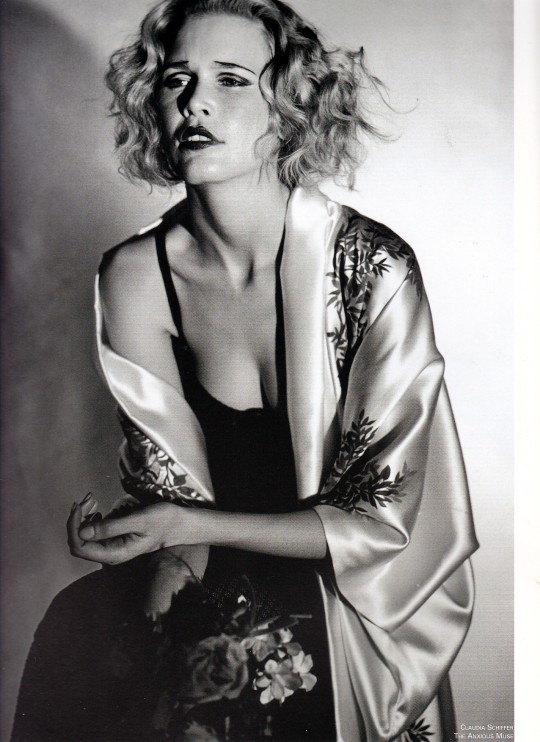
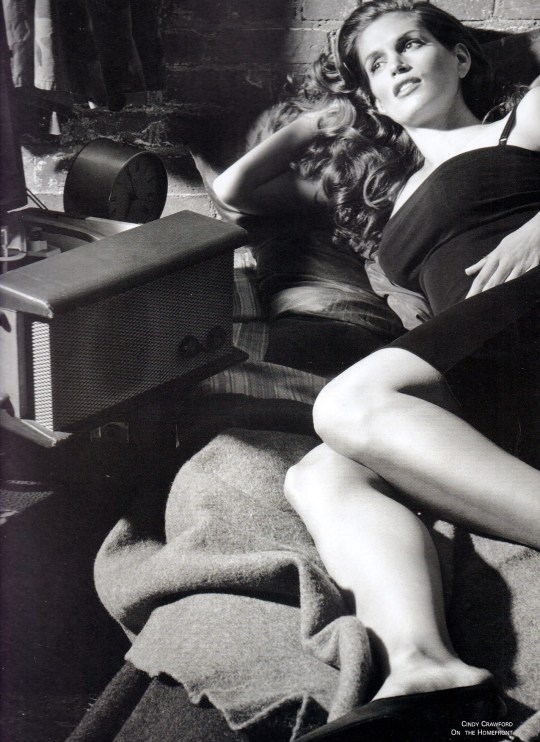



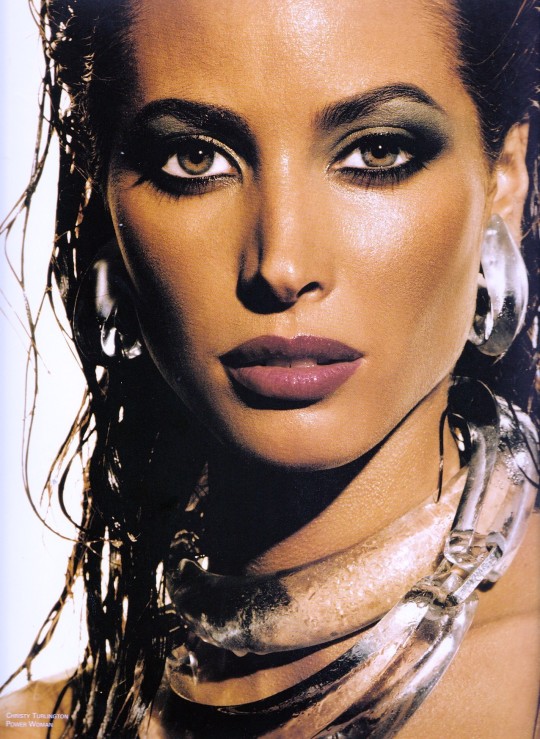

Femme Fatale
Serge Normant
text by Bridget Foley
Thames & Hudson, London 2001, 168 pages, 33 x 25 cm, Hardcover, ISBN 978-0500542521
euro 45,00
email if you want to buy [email protected]
Paying tribute to a century of female glamour, this illustrated book looks at such iconic beauties as Jean Harlow and Brigitte Bardot, and also recreates today's celebrities in the styles of the past. The book invokes the looks that defined the 20th century. Celebrity stylist Serge Normant crafts the clothes, settings, hair and make-up to transform some of today's most beautiful women. He re-creates Julia Roberts as Louise Brooks, and Cindy Crawford as a 1940s glamour goddess. Elizabeth Hurley frolics as a flower child and vamps as Mata Hari. Isabella Rossellini is a curvaceous 1950s pin-up and a punk from the 80s. Bridget Foley adds a cultural survey of each decade, from social and political issues to art movements and key style makers. This book is at once a dazzling celebrity portfolio, a compendium of looks from which to draw inspiration and a fascinating analysis of the evolution of fashion, style and beauty.
29/01/23
orders to: [email protected]
ordini a: [email protected]
twitter: @fashionbooksmi
instagram: fashionbooksmilano, designbooksmilano tumblr: fashionbooksmilano, designbooksmilano
#Femme Fatale#Serge Normant#stars hairstylist#female glamour#Julia Roberts#Cindy Crawford#Isabella Rossellini#Bridget Foley#fashion style beauty#fashion books#fashionbooksmilano
21 notes
·
View notes
Link
Check out this listing I just added to my Poshmark closet: HUDSON Jeans Elle Mid Rise Ankle Krista Super Skinny Dark Wash Women's SZ 26.
0 notes
Link
Check out this listing I just added to my Poshmark closet: Hudson Mid Rise Natalie Super Skinny Jeans Women's Waist Size 25.
0 notes
Link
Check out this listing I just added to my Poshmark closet: Hudson Nico Super Skinny Women’s Jean Upcycled Cute Distressed Size 28.
0 notes